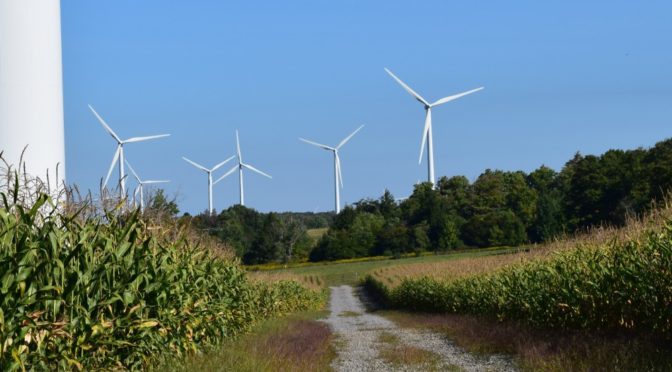Ohio lawmakers are currently considering a measure that could transform the state’s rural communities, and last week they heard powerful testimony from those who will be directly impacted.
Fixing Ohio’s wind turbine setbacks
Let’s go back to 2014. That year, the state legislature adopted onerous wind energy setbacks, without accepting public comment or having any public debate, before adopting them. The new regulations were among the country’s strictest siting requirements and have essentially functioned as a wind energy ban ever since.
Ohio has only three utility-scale wind farms, despite high energy demand and adequate wind resources. This means Ohio’s rural communities have missed out on millions of dollars in lease payments and added tax revenue, not to mention billions in project investments.
To help state lawmakers understand exactly what’s at stake, Gary Baldosser testified before a panel last week. A fourth-generation farmer who raises corn, soybeans and wheat, a wind farm has been proposed in Gary’s town but has yet to be built because of Ohio’s unnecessary setback requirements. According to Gary, here’s what the wind farm would mean for his family:

Putting a number on the benefits of Ohio setback reform
Gary’s story isn’t unique. John Hensley, AWEA’s Deputy Director of Industry and Data Analysis, also offered testimony last week to quantify the benefits of fixing Ohio’s setbacks. Here are some highlights:
For years, Ohio has largely missed out on economic development opportunities from the U.S. wind industry. Currently, Ohio contains just three utility-scale wind projects, significantly less than neighboring states. As a result, Ohio wind projects represent just $1.1 billion of capital investments, significantly lagging neighboring states. In comparison, the U.S. wind industry has invested three times as much in Michigan and Pennsylvania, four times as much in Indiana, and eight times as much in Illinois.
Based on Ohio siting applications and company records, developers have plans to build over 3,300 MW of new wind projects in the state. If built, these projects are estimated to provide over $4.2 billion in local economic activity over their life, including capital investment, operational expenditures, tax payments, and lease payments to landowners. And that does not account for the induced benefits resulting from wind project developers staying in hotels, eating at restaurant, buying fuel, going to the movies, or whatever else they may do while designing, building, and working at the project.
Despite the economic potential of these wind projects, most are at risk of not being built due to the siting requirements in the state.
Economic modeling based on the National Renewable Energy Laboratory’s Jobs and Economic Development Impact (JEDI) model and empirical data relating to Payment in Lieu of Taxes (PILOT) agreements for existing wind projects shows that the current pipeline of projects proposed in Ohio would generate $4.2 billion in local economic activity. This includes: $2 billion in local capital investment; over $1 billion in lifetime operational expenditures in the state; $660 million in PILOT payments to local schools and governments; over $440 million in land lease payments to landowners; and the need for 13,000 full-time equivalent (FTE) jobs.
Aside from the potential economic loss directly from wind projects, the lack of wind power development is impeding Ohio’s ability to compete for new businesses. Large companies like Amazon, Google, and Apple are constantly looking to expand their existing facilities, while meeting their ambitious clean energy requirements. By constraining wind energy development, Ohio risks losing major business investment to nearby states that are embracing clean, local sources of energy. For example, in 2015, Facebook chose Texas over Ohio to host a billion dollar data center, citing the inability to secure renewable energy for the facility.
Changing Ohio’s setbacks will bring new opportunities for prosperity to rural communities throughout the state. We know this because the vision Gary Baldosser shared in his testimony has already become a reality in the few towns where wind development has been allowed to occur. For example, consider the case of Van Wert County:

Ohio lawmakers should ensure more of their constituents have more of these opportunities, not less of them. Now they have the chance to do that by correcting a mistake made back in 2014. Ohio should reset the wind turbine property line setback requirements to 1.1 times the height of the turbine from base to vertical blade tip. Doing so will unlock billions of economic benefits for the Buckeye state.
aweablog.org

